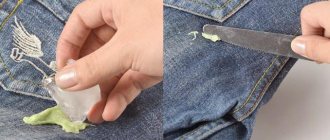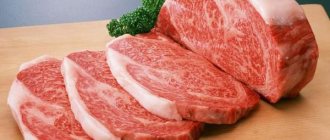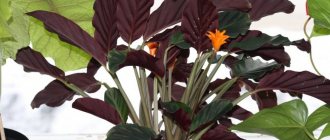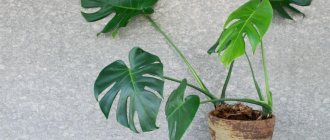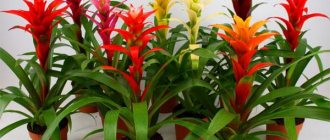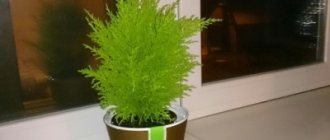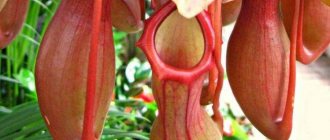Botanical description of the plant
The myrtle tree is an evergreen shrub of the Myrtaceae family, whose homeland is considered to be the Mediterranean countries, in particular Southern Europe and North Africa. The plant has small oval-pointed opposite leaves of a dark green color, leathery in structure. The shoots are strong, flexible, and branch well. The pillar is erect, thin, but quite strong.
Did you know? All parts of the plant, in particular the flowers and leaves of the myrtle tree, contain the oil of the same name. If the leaf is viewed through rays of light, you can see small dots and veins in which this product is located.
During flowering, axillary flowers are formed on the shrub, consisting of five petals of white or cream color. The flowers are fixed on a long and thin stalk and have a pleasant aroma. The flowering period of the crop falls in June-July. After flowering, fruits are formed on the plant - round or elongated berries (nuts) of dark green, dark blue or light green color. The fruits are edible, contain 10–15 seeds, and ripen in late November – early December.
general information
According to legends, myrtle (care at home does not take much time) grows in the Garden of Eden. Adam managed to take the twig with him when God cast him out for disobedience. He planted it in the Mediterranean, where, due to the favorable climate, the tree took root. There are also references to this culture in Greek mythology. The wreath of the goddess of beauty Aphrodite was made of myrtle. Therefore, it is a symbol of love and devotion. Nowadays, in some countries, the bride's bouquet necessarily contains a sprig of a fragrant plant.
In the wild, the greatest concentration of myrtle is observed in subtropical climates, which are characterized by warmth and high humidity. It is represented by shrubs and low trees, the maximum height of which is three meters. They can be found in South America, Asia and Africa.
The myrtle houseplant (growing and caring for it will not cause difficulties even for beginners) is widespread throughout the world. Its branches are covered with small, pointed leaves that are bright green in color. During the flowering period, white or pink buds appear, which grow singly or in groups. The shape and number of petals may vary. It all depends on the specific variety, of which there are quite a few today. After the flowering period ends, small berries appear in place of the buds. The leaves contain essential oils that not only emit a pleasant aroma, but also have beneficial health properties. They also purify the air, which improves a person’s overall well-being and reduces the risk of developing colds.
Photo gallery
Under natural conditions, myrtle flowers are pollinated by insects. In apartment conditions, they should be pollinated independently, using a cotton swab or a small brush.
Since myrtle is valued not only for its appearance, but also for its medicinal properties, it is loved to be used to treat ailments in folk medicine. In particular, the essential oil has healing, anti-inflammatory, and general strengthening properties, due to which it is used in the treatment of colds, flu, ARVI, inflammation of the female genital organs and urinary tract. Medicinal decoctions and infusions are prepared from the leaves and flowers of homemade myrtle, which are taken orally to get rid of allergic reactions, headaches, and inflammation of the respiratory system.
There is an opinion that myrtle is poisonous. Indeed, its leaves contain a small portion of a toxic substance, but there is no danger from it for a healthy person. However, you need to understand that the use of a flower to treat ailments must be strictly dosed, and most importantly, agreed with the attending physician.
Kinds
Common myrtle (Myrtus communis)
In home floriculture, the most commonly grown myrtle (Myrtus communis) has a short branched trunk covered with exfoliating scales of red-brown bark. The leaves are green, oval-lanceolate, glossy, leathery, with a pleasant aroma. The flowers are white or pale pink with prominent stamens, the fruits are red-black berries. Blooms from June to August. Popular cultivars: “Tarentina” - a compact bush with berries that are smaller than those of the original form, but there are significantly more of them than those of the common myrtle; The variegated variety has a creamy-white pattern on green leaves.
Lush myrtle (Myrtus apiculata)
Also interesting is the lush myrtle (Myrtus apiculata) - a bush or tree with peeling brown bark, under which the trunk is creamy white. The leaves are dark green, elliptical, matte. White single flowers bloom in July-August, black-red fruits are edible.
Myrtus chequen
Tree with shiny green leaves with wrinkled edges. This species is the most resilient of the myrtles.
Ralph's myrtle (Myrtus ralfii)
An erect bush with pinkish flowers and red edible berries. It is a variegated variety with a white-cream border around the edges of the leaves.
Purchase and adaptation
The key to beautiful, lush flowering and long life of myrtle is a healthy and strong plant. Therefore, when choosing a crop in a flower shop, it is recommended to pay attention to:
- leaves - they should have a shiny surface, elastic, durable structure, and have a rich dark green color;
- branches - must be strong, flexible, without yellowness and dryness;
- soil - should have a slightly moist structure.
The presence of dry, yellowed leaves, too dry and stagnant soil indicates that the basic rules for growing a flower have been violated, in particular, non-compliance with the watering and fertilizing regime, lack of lighting, etc.
Immediately after purchase, the flower needs to be replanted with a complete replacement of the earthen coma. New soil enriched with valuable components will allow the plant to quickly adapt to new conditions and sprout.
Top dressing
Myrtles are unpretentious plants, but when growing them, you must follow some basic rules. It is very important to provide the trees with sufficient light and moisture. Also, great attention should be paid to feeding. Myrtles begin to bloom very early, so the first fertilizers are applied to the soil in early spring. Complex mineral compositions are best suited for this. But when choosing fertilizers, it is also important to consider the specific goals you want to achieve. If you want to get a lush crown, it is recommended to use fertilizers rich in nitrogen. For abundant flowering, plants are fed with phosphorus mixtures, which are used once a week throughout the summer. In winter, myrtles hibernate, so you need to feed them no more than once every month and a half.
How to replant myrtle after purchase
A mandatory step after purchasing myrtle is to transplant it into a new container. For planting, it is recommended to use a soil mixture, which must include equal parts of turf soil, peat, humus and fine river sand. Replanting the crop is carried out using the classical method, with a complete replacement of the earthen clod.
Replanting activities are carried out according to the following scheme:
- line the bottom of the new container, which should be 2–3 cm in diameter larger than the previous one, with a drainage layer using expanded clay or pebbles;
- cover the drainage layer with a small layer of prepared substrate;
- Carefully, holding the lower part of the trunk, pull the plant out and inspect the root shoots. If there are dry, damaged, rotten roots, remove them with a sharp knife. Sprinkle the cut areas with crushed activated charcoal or charcoal. Completely rid the root system of old soil;
- place the myrtle in the pot, carefully leveling the root shoots;
- sprinkle the crop with the remaining soil, leaving the root collar above the soil level;
- Water the planted plant, and be sure to drain the remaining moisture in the tray.
The planted flower is placed in a well-lit place, providing it with peace for 7-10 days so that it can quickly get used to new conditions.
Video: Transplanting myrtle
Diseases and pests of myrtle, methods of combating them
To begin with, we note that myrtle does not have any special diseases or serious problems. But individual ailments can still sometimes occur.
For example, in poorly drained soil, a tree may develop root rot. Some problems may arise due to non-compliance with key care rules: insufficient lighting, poor watering. It is important to always take into account the fact that myrtle is a very fastidious plant, and therefore each condition for its care must be observed as precisely as possible.
Also, the tree is often attacked by insects: these can be thrips, scale insects, spider mites, and aphids. For this reason, you need to carefully monitor the condition of the plant and, if there are any negative signs, carefully inspect it for the presence of insects. This requirement is especially relevant in relation to old plants.
If pests are still found, then it is necessary to purchase the appropriate drug to combat them. This product must be used in strict accordance with the instructions.
Necessary conditions and proper care
In order for a myrtle indoor plant to delight with its beautiful flowering, it needs to create certain growing conditions and follow the rules of care, which include maintaining a high level of humidity, a comfortable temperature and high-quality lighting.
Lighting
One of the main requirements for a plant to grow indoors is lighting. Myrtle is a light-loving crop and prefers bright but diffused lighting. The best habitat for the tree is window sills on the south, south-west or south-east side of the apartment.
When the flower is located on the east side, it is necessary to install additional light sources, since due to its deficiency the foliage will turn pale and fall off. The optimal length of daylight should be at least 10 hours. As additional lighting, experts recommend using special, fairly powerful phytolamps.
It should be noted that the tree can easily tolerate direct sunlight, but it should not be exposed to it for a long time. In summer, it is recommended to take the flower out into the air, but protect it from drafts and sharp gusts of wind.
Air temperature and humidity
Myrtle does not like too hot climates and feels great in summer at air temperatures of +18...+20°C. In winter, when the plant is at rest, it needs coolness. At this time, it is enough to maintain the temperature in the apartment at +5...+10°C.
Important! If you do not take care to reduce the temperature parameters in the room in winter, then the myrtle may partially, and sometimes completely, shed its foliage. You also need to remember that at low temperatures the plant develops flower buds.
Since the natural habitat of the shrub is the subtropics, it needs to organize similar ones in apartment conditions: indoors, regardless of the season, the humidity should be maintained at 60–70%. In the summer, when dry air prevails, you need to install additional sources of moisture close to the flower, for example, containers with water, decorative fountains, aquariums with fish. To ensure proper moisture, the flower must be sprayed using a spray bottle and soft, settled, but not cold, water. If the air is too dry, the tree begins to lose its aesthetic appearance, sheds its leaves, and becomes lethargic and lifeless.
In winter, when low temperatures prevail in the room, it is better to avoid spraying.
Watering
The myrtle tree, as an inhabitant of a subtropical climate, requires frequent and abundant watering. Before watering myrtle, it is necessary to analyze the condition of the soil - it should always be moderately moist. It is not recommended to allow the soil to become excessively dry or waterlogged, as this will negatively affect the appearance of the crop. Irrigation activities must be carried out according to a strictly developed scheme.
The need for watering is determined by the drying (but not complete drying) of the top layer of soil. To moisturize the flower, the bottom watering method is used, when water is poured directly into the tray. After 10–15 minutes, excess moisture is poured out of the pan to prevent it from stagnating, which can cause rotting of the root system.
Important! Complete drying of the soil can lead to the death of the flower, during which it will be impossible to revive the plant.
When the top layer of soil dries out, it is recommended to water the flower using the immersion method, placing the pot in a container of water for 5–7 minutes.
To moisten the wood, use soft, settled or filtered water at room temperature. In winter, the frequency of watering is reduced and the soil is irrigated as needed.
Top dressing
In order for the shrub to have the opportunity to fully develop and maintain intensive growth and flowering processes, it is recommended to fertilize it regularly. During the warm period, fertilizing should be done every 10–14 days. It is not recommended to fertilize the plant in winter.
Read more about proper feeding of indoor plants.
As fertilizing, it is allowed to use any store-bought universal products intended for decorative leafy or flowering crops. The fertilizing mixture is always applied in liquid form. To do this, it must be dissolved in warm water and the plant should be watered only the next day after traditional watering.
Experts advise choosing the type of fertilizer based on the ultimate goals of growing the plant. For good flowering, phosphorus-based products should be used, and to obtain a compact, neat tree, complexes with a high nitrogen content should be used.
Trimming
Pruning is tolerated very well by the plant - it can be used to give the tree the desired decorative shape, creating various compositions.
It is recommended to carry out the procedure no more than once a year, in early spring, after a period of winter dormancy. It is better to combine pruning with tree replanting - this will rejuvenate the plant and stimulate its active growth. To learn how to properly prune myrtle, you should decide on the desired shape of the tree. If the main goal is to get a beautiful shrub at home, then it is necessary to trim the top shoots. To form a tree with a lush crown, you should trim the sides. If you do not take any pruning action, then the plant will eventually take on the shape of a pyramid.
Important! Frequently pinching the top of the tree will cause its size to become much smaller.
Immediately after cutting the shoots, experts recommend applying fertilizer in full dosage. Feeding will stimulate the growth of shoots and improve the plant’s adaptation to the new form. Trimmed shoots can be used as cuttings for propagation.
myrtle tree
We have already talked about how beautiful it is on the pages of our Encyclopedia. Here we will discuss how to grow myrtle from cuttings to an adult tree.
As you can see, in the first option there is one stalk in the cup, it is supported by a circle cut to the diameter of a polyethylene foam cup and cut to the center. Not only does it support the cutting, but it also prevents the water from evaporating too quickly. You can cut such a circle from foam rubber.
In the second option, many cuttings are rooted in one jar. Not all of them will give roots.
In the photo you can see strong roots and the beginning of the growing season of a rooted myrtle cutting, but it must be planted carefully to minimize damage to the delicate root processes. Therefore, Yuri Alexandrovich ties the stalk to a peg. A peg stuck into the ground reliably holds the cutting without deepening the root collar.
If myrtles have strong roots, they take root instantly, and in high humidity conditions they grow very quickly. Thickened plantings in a common container require good ventilation of the room and timely planting in separate pots. It is perhaps more correct to immediately plant myrtle cuttings in separate containers, depending on the desired shape of the adult plant. If you plan to grow a dense bush, you can plant 2-4 cuttings together; if you plan to grow myrtle in a trunk or as a potensai, then each cutting has a separate pot. The option of merging trunks is also possible; it also involves planting several cuttings in one container, but it requires some skill and preparation.
Is it possible to prune myrtle roots when transplanting rooted cuttings?
Yes, it is possible, if the root system is well developed and has many lateral roots in the upper part, then you can painlessly trim the elongated roots. After cutting the roots, they need to be sprinkled with crushed activated carbon tablets or ground cinnamon.
Dimensions of a pot for replanting myrtle
Here is an example of planting a rooted branch (stem thickness initially 2 mm), which has long grown and reached a height of 75 cm from the ground.
Myrtle grew in a glass (200 g) for about two years. The thickness of the trunk at the root collar reached 6 mm. The earthen lump is almost completely taken over by the roots. If the roots of your cutting have grown only in the lower part, formed a “beard”, or crawled out of the drainage holes, and the upper part of the pot has not been developed by roots, when replanting it makes sense to cut off those roots that stick out from the holes of the pot, or those that have curled on the bottom in a spiral, displacing all the soil. After this, you need to transplant the young myrtle back into the old pot. It can be replanted into a new one only when the roots fill the entire space of the pot.
Formation of myrtle
The formation of a myrtle tree occurs constantly. Trimming the ends of shoots can be carried out several times during the spring-summer season. You can grow the myrtle tree in a completely free style, as a shaggy bush. You can form a standard or another style. But first you need to imagine the image you want to strive for.
Important: when wintering in cool and, even more so, cold conditions, spraying is not required, and watering is scanty.
Using wire, you can pull the branches in the desired direction; they are quite flexible even in adulthood. But old branches covered with brown bark can be bent gradually, smoothly, over several months.
From personal experience, Borya: My myrtle grows on a north-west window, but it will not be possible to form a spherical crown without additional lighting. I use this technique: as the branches lengthen, I tilt the largest of them to the sides almost to a horizontal position and secure them with wire. Then, along the entire length of the branch, new shoots begin to appear from the dormant buds (before that they were in the shade), and the entire branch becomes densely leafy.
The size of the pot should correspond to the size of the root system and increase as the earthen ball becomes entwined. It all depends on how many myrtle roots there are. In my opinion, it is better to take a cramped container than a spacious one, since in the second case, part of the soil may sour and become unusable even before the roots have time to penetrate into it.
I prefer to plant myrtles in a mixture of some peat soil with coarse sand, in a 1:1 ratio. Of the purchased ones, in my opinion, you can use the 'Cactus' mixture, as it is the most porous and suitable for most plants.
What needs to be done to give myrtle the appearance of a tree from cuttings
Since when growing in a 'bush' the branches touch and, as it were, slightly 'prop up' each other, then, 'left alone', this branch may for some reason become bent (from accidentally touching, or as a result of tilting towards the light, for example ). Therefore, it is desirable for it to have support in the form of a peg stuck nearby.
As a result, shoots begin to grow on the upper leafy part. Those shoots that appear not on the “crown”, but on the stem, must be removed (otherwise you will again end up with a bush). Once the stem reaches a thickness of about 0.5 cm, the support can be removed.
Bamboo skewers (3-4 mm thick and about 30 cm long) are very suitable for the role of sticks for supports. The peg should be located, in relation to the plant, on the side of the room or to the side so as not to obscure it.
An example of such work from Yuri Aleksandrovich Markin:
Bonsai style Sokan
And this is Potensai - the Sokan style “Twin trunks”. 2-3 year old plants grown from rooted cuttings are used. Rearranged from wintering to prepare for spring growing season - pruning and shaping to suit bonsai styles. The skeleton and trunks of the first Potensai specimen are formed in the Sokan style with the application of ligatures and stretch marks. The final height of the workpiece is 28 cm:
Formation work continues. Myrtle has its own subtleties, says Yuri Aleksandrovich - fragile wood and loose bark, although, when broken, it grows together remarkably well.
Before all manipulations, I take a long shower to soak the tissues. When bending vertical and rather thick branches at an angle of 90°, I kind of knead the trunk area between my fingers - I crumple it, like a joint on a finger.
You can apply another method to thick branches. Make a crescent cut under the branch, at the place of the intended bend, to the middle or 2/3 of the thickness of the branch. The cut is made in thin sections with adjustment (bending and clarifying the position of the branch in the final form); if not enough, then another thin fragment is removed from both sides (such as slices).
Next according to the scheme is wrapping with raffia and applying a ligature. If it is difficult to bend copper wire in insulation with a cross-section of 2.5 mm, then you can apply two wires of 1.5 mm each or several folded wires of an even smaller cross-section - example - photo above (lower left corner), a coil of wire in the photo with myrtle. This wire can be used both for ligatures and for stretch marks.
How to propagate
Gardeners who grow indoor plants should know how to grow myrtle at home. Two methods are used to propagate the crop: cuttings and seeds.
Seeds
Growing a myrtle tree using the seed method is a very complex, labor-intensive and time-consuming process, so it is not suitable for beginner gardeners. However, if you want to grow the crop at home, you can still use material purchased in specialized stores.
To get a new myrtle from seeds, a number of complex measures are performed:
- soil 8–10 cm thick, which includes peat and river sand, mixed in equal proportions, is poured into containers for future seedlings;
- the seeds are sown evenly on the soil surface, not compacted, sprinkled with a layer of the remaining substrate (3–4 cm);
- the surface of the soil is moistened and the container is covered with plastic film;
- after the first shoots appear—approximately 1–2 weeks—the film is removed;
- As soon as the sprouts grow and become stronger, they are planted in separate containers.
When the root system completely fills the pots, then the plant can be transplanted into permanent containers.
When propagating a myrtle tree using the seed method, flowering occurs after 5 years. Did you know? Common myrtle and other varieties are widely used in cooking as an additive to various dishes. In particular, preserves, jams, liqueur and wine are prepared from the berries. The leaves are used as a seasoning in marinades and pickles, meat and fish dishes.
Cuttings
Compared to the seed method, the vegetative propagation method requires less effort and time. Moreover, flowering occurs much faster when cuttings. The procedure is carried out in February or March, or in the summer - in July.
To propagate a myrtle tree using the vegetative method, follow these steps:
- From a healthy, strong plant, semi-lignified shoots 5–8 cm in size are cut off from the lower or middle part. To prevent moisture evaporation, part of the leaves is removed from the cuttings;
- a soil mixture is poured into the container, which consists of equal parts of leaf soil and fine sand;
- cuttings are planted in the ground to a depth of 4–5 cm at a distance of 5–10 cm from each other;
- the surface of the earth is sprayed with water from a spray bottle;
- to create a greenhouse effect, cover the container with cuttings with film or glass;
- the container is placed in a well-lit, warm place with a temperature of +18…+20°C;
- To prevent root rotting, the container with the shoots is periodically opened and ventilated.
Rooting of cuttings occurs approximately 30 days after planting. A sign of successful rooting is the formation of young leaves on the shoots. Next, the grown and strengthened cuttings are transplanted into separate pots and given proper care. The first flowering can be observed after 3–4 years.
Transfer
Myrtle grows slowly and does not need frequent replanting. It is enough to do this every 3 years if he is an adult. For a young flower, the frequency is once every 12 months. It's better to do this in the spring. When replanting, the new pot should be slightly larger than the old one.
At its bottom, be sure to first lay drainage, and then the prepared substrate. Place the tree in a pot and cover the roots with soil. Level the soil and water the flower.
Tip : to make it easier to remove the plant from the pot when replanting, do not moisten the myrtle for several days beforehand. If the soil is dry, it will be much easier to get it out of the soil.
Possible difficulties during cultivation
When growing crops, flower growers may encounter the following difficulties:
- the color of the leaves becomes less intense, the leaves become smaller, the stem elongates in height - indicating a lack of lighting;
- the leaf blade turns yellow, brown spots appear on it, the edges of the leaves dry out and curl - this indicates an excessive amount of light and a lack of moisture;
- leaves fall - the reason may be high room temperature in winter or lack of lighting;
- drying of branches - is a consequence of too low air humidity in the room;
- lack of flowering - the reasons for this phenomenon may be too frequent and abundant pruning or lack of ventilation in the room.
Violating the rules for growing a myrtle tree can also lead to pest damage.
The plant can be attacked by parasites such as:
- spider mite - its action is expressed in the form of the formation of a white web at the bottom of the leaf plate;
- scale insect - has a detrimental effect on the foliage of the bush, sticky mucus and brown spots appear on it;
- aphid - settles on the underside of the leaf plate, feeds on sap, which is manifested by drying and darkening of the leaf.
Modern insecticides, which are recommended to treat the foliage and stem of myrtle, can destroy parasites.
In addition, for pest control and prevention, experts advise wiping the leaves with a soap solution, tincture of garlic or a weak solution of tobacco. Myrtle is an iconic evergreen tree that delights gardeners with its spectacular appearance and the presence of a number of unique healing qualities. The flowers and leaves of the plant contain essential oil, which has anti-inflammatory, antibacterial, anti-cold properties and is used to treat various ailments.
Landing
Planting myrtle
quite an easy procedure. It is best to use cuttings for this (a lot of troubles can arise with seeds).
The cutting will be able to take root very quickly if it is placed in a container of water. As soon as the first shoots begin to appear, you can start planting the flower.
If you pluck the branches in the middle or end of the spring season, you significantly increase the likelihood that after planting the plant, the myrtle will grow lush and healthy.
Typically, plant growth can last from 3 to 5 years.
Location and lighting
After the myrtle has been planted, you need to think about where to place it in the house. The most suitable option may be window sills, which will be located from the west or east. If this is not possible, and you have to place the flower on the south side, then it is necessary to protect the plant from direct rays of the sun. Otherwise, the myrtle will not bloom, and its leaves will quickly fade.
It is believed that myrtle tolerates natural light well. But still, you need to be careful. If exposed to the sun for a long time, the plant may get sick and die. It is for this reason that in the summer it is necessary to worry about a suitable location for the flower in the house.
Pot size
When carrying out the replanting procedure, you need to worry about a new pot for myrtle in advance. If the plant has reached its maximum size or is still growing, then it is best to purchase a pot that is 2-3 times larger than the original one. You need to pay attention to tall and wide plastic pots, because quite often the root system of a flower grows greatly and begins to extend beyond the edges of the pot. With the right choice of this accessory, such trouble should not happen.
A pot that is too large is also dangerous. In this case, all the liquid will flow to the bottom, and the root system will absorb it. With prolonged exposure to moisture, the process of rotting may begin. Therefore, it is very important to monitor how often the flower is watered.
The soil
If you plan to grow myrtle in the house, then it would be best to prepare the soil, which will consist of turf soil, ordinary sand and humus. Before planting, all components are mixed together in a 1:1:1 ratio.
When purchasing land from a flower shop, preference should be given to soil for palm trees.
Transfer
After the winter cold has passed, the plant must be replanted. Before this procedure, it is necessary to purchase a convenient and correct size pot and prepare the soil, which will promote the active growth of the Mediterranean plant. The soil can be purchased at a specialized store, or you can prepare the soil yourself. Here everyone has the right to decide for themselves.
First of all, drainage is laid out at the bottom of the pot. For this you can use ordinary pebbles or coarse sand. The drainage layer is standard and is at least 3 centimeters. After this, a little soil is poured into the pot and the plant itself is placed. If the roots are not crowded, they do not bend and do not look out of the pot, then you can continue to cover the plant with soil. Do not sprinkle the myrtle trunk too heavily. It should always be level with the top of the pot.
After transplantation, the flower is watered or sprayed. This is done daily until the plant adapts to the new growth conditions.
An adult plant is replanted every 3-4 years.
Fertilizers and fertilizing
Fertilizers and top dressing for myrtle
necessary during the period of active flower growth from March to August. To do this, you can purchase the following fertilizers in the store: “Kemira-combi”, “Kemira-universal” or other types of fertilizers that are recommended for feeding house plants.
If the concentration of fertilizer is quite strong, then it can be diluted with plain water.
Proper watering
Myrtle is a very water-loving flower. Therefore, in no case should you allow the soil to dry out too much. If this happens, the roots will instantly react in a negative way, which can significantly affect the overall health of the plant.
It is best to water the world with boiled or settled water, which will not contain lime. Once every 7 days, the flower must be watered with water, to which a little lemon juice or citric acid is first added. If these components are not sufficient in the soil, then the plant's root system may not strengthen properly.
With the onset of hot weather, it is recommended to spray myrtle daily. The tray can also be placed in moistened expanded clay. But it is very important to ensure that the bottom of the pot does not come into contact with water!
Temperature
This flower is quite resistant to low temperatures. With proper care, it tolerates winter and late autumn well. So, during periods of severe cold, the optimal room temperature for a flower will be considered to be 7-10 degrees Celsius. The only thing you need to take care of is proper watering. Under no circumstances should the soil of the flower be allowed to become dry in winter.
If it is possible to take the plant to a balcony or loggia, then this can be done in the autumn. Only if the mark drops below 7 degrees, the plant will still have to be moved into the room.
If wintering is unsuccessful, myrtle may shed its leaves. But this is not a reason to get rid of the flower. Already in the first half of February, the plant will regain its strength and take on its previous appearance. True, flowering after this may not happen.
Humidity
The flower loves water and water procedures very much. Therefore, it is believed that it can be sprayed almost every day. The only exception is the winter period. At this time of year, watering should be avoided. The air humidity in the room where the myrtle is located should be at least 60%.
Trimming
Pruning this flower is the only way to change its appearance and shape. The most suitable period for this procedure is spring. If you pinch the branches in a timely manner, the plant will be very lush (pinching can be done at any time when the myrtle needs it).
The need for light
In winter, the plant needs a lot of sunlight. Thanks to the correct maintenance of the plant at this time, you can strengthen its health and activate the flowering period.
If it is necessary to change location, work should be done carefully and gradually, because the lighting level will be different. The myrtle first needs to be placed a little further from the window and light, this way it will get used to the changed conditions more quickly, and the plant will tolerate them more calmly.
The plant loves light, but it is important that the rays are not direct, but diffused. The ideal place for myrtle in winter is a western or eastern windowsill. When located in the northern half, spring flowering will be very sparse.
Pruning rules
Caring for a myrtle tree also includes the formation of a beautiful crown. You can form a crown in different ways - it all depends on the purpose of growing this indoor plant. Most flower growers do not care about the shape of the crown, the main thing is that the plant blooms. In these cases, the crown is formed in the form of a standard tree.
Do not resort to excessive pinching and pruning of side shoots of a young plant. However, one should take into account the fact that the crown of a mature plant is restored very easily and quickly. Thus, you can always change your intentions regarding the appearance of the crown. The most important condition is to carry out the formation of the crown in early spring or after the end of flowering.
